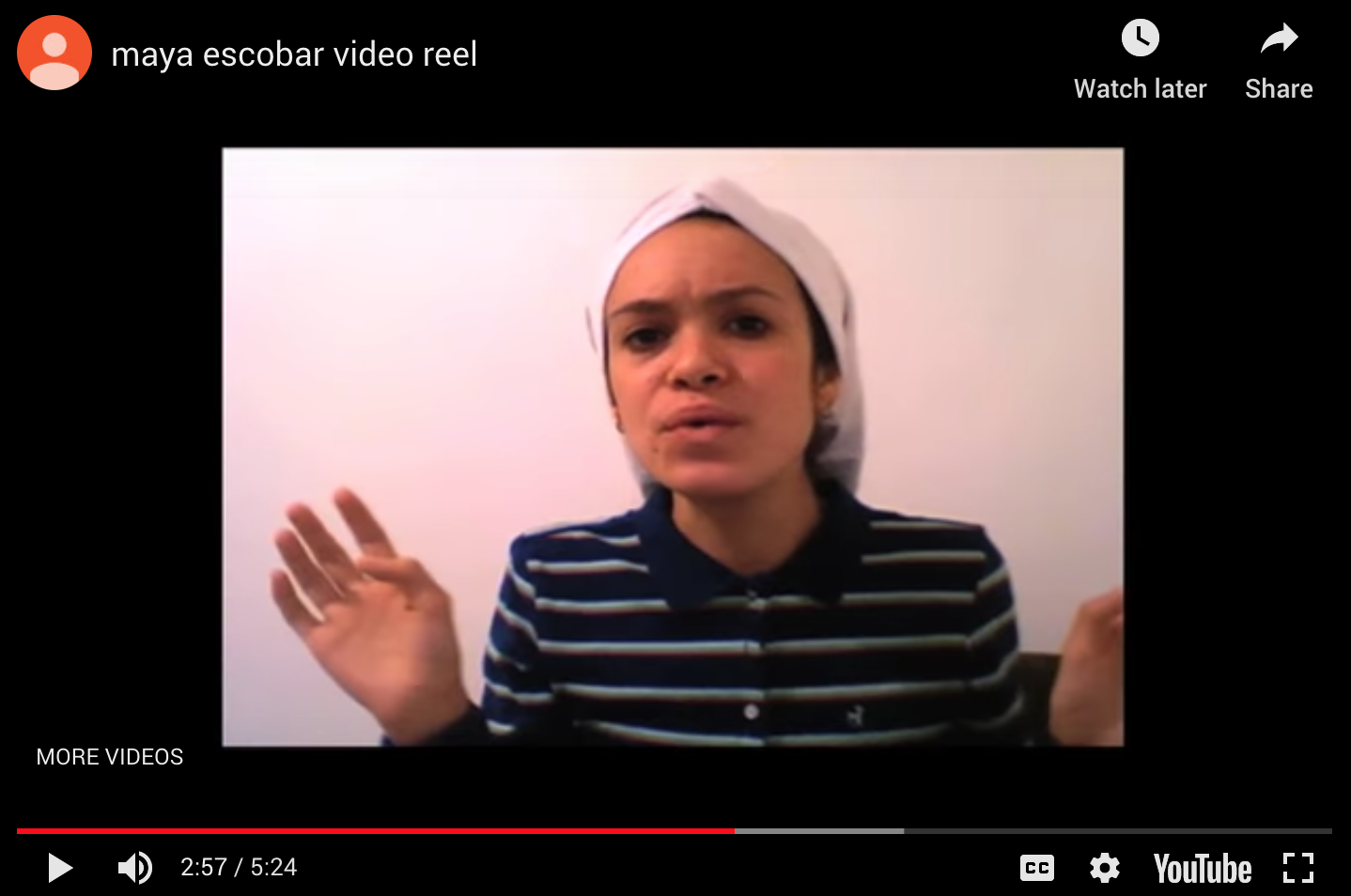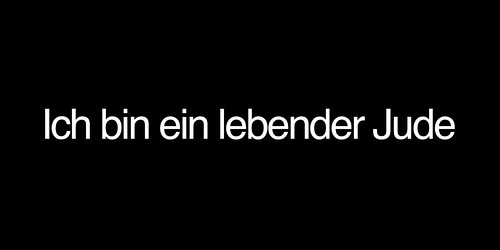I will be presenting Berlin's Eruv at the 2009 Conney Conference: Performing Histories, Inscribing Jewishness at University of Wisconsin Madison. Berlin’s Eruv is a conceptual project that addresses the assumed non-presence of Jews in Germany. Berlin does not actually have an eruv. There is however, an active Jewish community, one that is frequently overshadowed by the city's prominent monuments and memorials commemorating Jewish life (death). Berlin's Eruv weaves together voices from Berlin's Jewish community in an attempt to construct a metaphorical eruv representative of a living Jewish Community. Just as the eruv exists in the minds of the people who abide by it, Berlin’s Eruv manifests itself through the conversations surrounding the idea of the piece.*****I will be showing Berlin's Eruv at 2009 MFA Thesis Exhibition, opening May 8th at the Kemper Art Museum.
Berlin’s Eruv is a conceptual project that addresses the assumed non-presence of Jews in Germany. Berlin does not actually have an eruv. There is however, an active Jewish community, one that is frequently overshadowed by the city's prominent monuments and memorials commemorating Jewish life (death). Berlin's Eruv weaves together voices from Berlin's Jewish community in an attempt to construct a metaphorical eruv representative of a living Jewish Community. Just as the eruv exists in the minds of the people who abide by it, Berlin’s Eruv manifests itself through the conversations surrounding the idea of the piece.*****I will be showing Berlin's Eruv at 2009 MFA Thesis Exhibition, opening May 8th at the Kemper Art Museum.
Frida Kahlo at the synagogue: Maya Escobar
Frida Kahlo at the synagogue: Maya Escobar and the young Jewish-American Creationby David Sperber in Ma'arav Israeli Arts and Culture Magazine.translation by Shlomit NehoraiARTICLE IN SPANISH & HEBREWMaya Escobar is no doubt one of the 'hottest' things developing in the Jewish-American art scene. Escobar defines herself "dyslexic internet artist". And in order to view her work you need not wander far.Her work is mostly created in familiar internet format, and is most often displayed on Youtube. Escobar, daughter to a Jewish mother and Guatemalan father, defines her art work as ongoing personal anthropological-sociological research into the narrative language that uses contemporary media.[youtube=http://www.youtube.com/watch?v=3li_mT--f-A]The "Acciones Plasticas" work includes short films that present a series of convincing characters and monologues that deal with identity questions. In the first short film in the series she appears dressed up as the Mexican artist Frida Kahlo who became an icon within the feminist discourse. it is commonly argued that Kahlo had some Jewish roots. Escobar is dressed and made up as is famously attributed to Kahlo - the uni brow - while screaming "I am Frida Kahlo, you are Frida Kahlo, we are Frida Kahlo". In agitation or in ecstasy she tears her custom, messes up her hair, wipes her make up off of her face and returns to being herself. In another short film in the series she carries on with a monologue of a jewish orthodox woman. The text here is so exact that for a minute the line between irony and slapstick to deep seriousness is blurred. In another short film the stereotypical Latin female as a sexual sensual object is presented, when here too the subject is moving between embracing the stereotypes and breaking them. Escobar is presenting different episodes that she had experienced herself and that deal with her hybrid identity as a woman, as a Jew and as a Latin American.[youtube=http://www.youtube.com/watch?v=NNAxEUEE43Y]
Another work of Escobar is "my shtreimel" - a video-blog that is also presented on Youtube.In that piece appears a young man in his twentieths who sits in his room in front of a computer and talk about his Shabbat rituals. The monologue describes an amorphous jewish world in which jewishness lives and materializes without obligation to its institutions and mostly in personal frameworks. A central part in this world is self deprecation: The young man shows his beloved shtreimel and mentions that the shtreimel which looks like the traditional is actually a women's hat purchased at a thrift store.
In the work "eruv" (intermingling) Escobar relates to the fact that in Berlin there is no eruv even though there exists a vibrant jewish community. In a series of photographed interviews with the city's citizens she transforms the notion eruv - from a halachic-legal notion that creates a conversion of the public space into the private space, into a blending - the creation of a multiple of characters and worlds. The blending (eruv)transforms into a cultural concept that celebrates the different and the unique. The individuals create a splendid mosaic that assembles anew the "collective" as a social concept. The way Escobar deals with the subject is typical to the jewish-american art world that tends to transfer concepts from the practical halachic and transfer them to another world, and so they transform into a metaphor of the personal or social condition. The personal experience is significant to Escobar: " Like other jewish rituals, the Shabbat encompasses practicalities that materialize private condition in a private space. Except that the understanding of the private space and the public space is fluid and changes at all times. I think that it is very important that people celebrate their Shabbat as a pleasant experience, defined and personal. The Shabbat rituals evolve all the time - not as an unbending obligation that is transferred from generation to generation, but as a result of a simple choice of the individual to create to him/herself nice and pleasant Shabbat customs. We all have these kind of customs."The intercontinental use of the Internet gave birth to a generation of individuals who create for creation's sake, and the concept of art for art's sake gets that way a new meaning. The Internet media connects individuals and contributes to mutual influences between people who work separately in far away places. The young work on the Internet challenges the old definitions in relation to what is considered art and what isn't. Similarly, it adopts new presentation forms that are not the norm in the art world's mainstream, and breathes new air into the art field.The discussion into Escobar's work leads into a wider discussion about the differences between the Jewish thinking in the Israeli discourse into the new understanding of the American world view. The Jewish-artistic engagement in the United States is influenced by the introduction of new-age ideas into the center of the conversation, and is integrating into the effort to create a connection between contemporary culture and the traditional Jewish identity. Within the American-Jewish community there are signs of a move from an organized institutional Jewish expression into a unique and personal expression of the very personal experience. These artists reorganizing the traditions on their own terms, and in this way contributing not insignificantly to the definition of Jewish-American Non-Orthodox Modern-orthodox anew. The link between Jewish culture and Jewish identity to art occupies a central role in this conversation.The echoes of this tendency can be seen in Israel as well ( in the young Yiddish culture developing in Tel Aviv, for instance ), but generally there is still a deep disconnect between the dominant concepts in Israel and in the United States. In Israel it is common to connect between Judaism to an organized tradition and to a blood line that is based on a genetic continuity. On the other hand, many young Jewish-Americans marry outside their religion, but nevertheless see themselves as an integral part of the Jewish world and expect to not be expelled from it. As opposed to Israelis who experience their Jewishness in terms of disintegration that followed restoration, the Jewish-Americans create new branches where growth and rebirth metaphors fit them better.The joining of contemporary culture and art to Jewish creativity expresses itself in fashionable characteristics like tattoos, hip-hop music, Internet art and the like, and is often understood as the disconnect with the accepted binary dichotomy between holly and the common. That is why conservative bodies see these art forms as a dangerous provocation. These new cultural concepts interconnect during confrontational discussions with the old cultural concepts. Philologically speaking it can be said that borrowing symbols from one discipline to another interferes with the semiotic systems. In the Kabalistic vernacular it is said that the energy that is released during the friction that is created by the disintegration of the usual vessels - creates "new light".
breaking down the elephant
Ruth at the writing center (who somehow amazingly manages my artistic craziness and dyslexia) helped me come up with this metaphor for my work, based on the story of the elephant and the blind men.I think it might become my artist statement.
Some people think that I am the true representation of the elephant.It is true I am an elephant, but not the only elephant.I try to break up the conception of being the only elephant.Some people see a small portion of my work and think it is the whole- the representative elephant.Others understand that each piece connects to another piece and that individually they are only fragments.When breaking the elephant up into pieces, information slips in through the cracks.People also respond to this new information- creating a bigger more amorphous elephant.
The amorphous elephant is broken up again and again, so that it is relevant to new individuals new experiences...
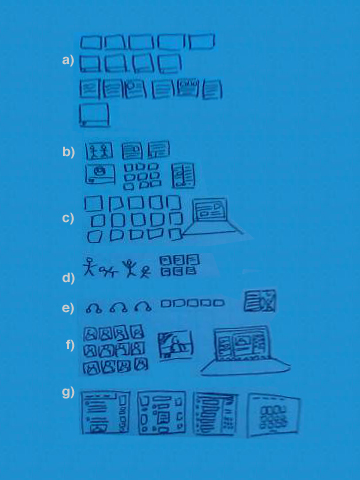 a) accionesplasticas.comb) mayatalk.wordpress.com/2007/04/11/obsessed-with-frida-kahlo/c) thewayismadebywalking.com/d) www.youtube.com/watch?v=V5sFV2xmpfAe) berlinseruv.comf) www.youtube.com/watch?v=359HwupsY1sg) mayaescobar.com
a) accionesplasticas.comb) mayatalk.wordpress.com/2007/04/11/obsessed-with-frida-kahlo/c) thewayismadebywalking.com/d) www.youtube.com/watch?v=V5sFV2xmpfAe) berlinseruv.comf) www.youtube.com/watch?v=359HwupsY1sg) mayaescobar.com
Dancing with Matisyahu
a little comedic relief in the middle of thesis writing.[youtube=http://www.youtube.com/watch?v=NKMJ4uRYXPE]you too can dance with matis, other choices involve:jumping out of a plane, becoming a super hero, staring in a fairy tale, or being the hottest toy.I give him mad props for being such a skilled promoter[youtube=http://www.youtube.com/watch?v=ATdmGgPbuvU&feature=channel_page]check him out on twitter @matisyahu
working doc
Years of forced migration, displacement, and exile have inextricably linked the Jewish people to the notion of placelessness, and Judaism has become a "portable" faith that manifests itself through "imagined" connectivity engendered through ritual and scholarship.Employing the Talmudic tradition of non-linearity--that links together past, present, and future--this paper will trace public and private expressions of Jewishness and discuss how these expressions of identity contribute to an evolving discourse, one that I argue is essentially what Jewishness is.From the Talmud, to newspapers, to the blogosphere, Jews use these spaces as platforms for following Jewish law halacha while simultaneously engaging in dialog concerning the actions they are performing.In the first section of this paper I discuss how I have located myself within the virtual landscape of the web. Over the past three years I have spent a significant amount of constructing online identities. I will explain the process by which I create profiles on various social networking sites–join online groups, post blogs, images, videos and articles and tag myself with specific labels from the opposing and related discourses I wish to address. In the second section I will detail how my public positioning of three video blogs Blues Alchim, my shtreimel, and eruv stl labled with tags such as: halacha, modernorthodox, minhag, yeshivish, blogosphere, and eruv, helped set the conceptual foundation necessary for the piece Berlin's Eruv, which I will highlight in the third section of the paper.
Blues Alchim is a youtube video blog that I found on the hassidic reggae artist Matisyahu's youtube channel MatisyahuTV. Backstage at the House of Blues in Cleveland, Matisyahu stands in front of a group of young men, all waiting to pray while the singer records a video blog. Upon noticing a giant painting of John Belushi covering the room's eastern wall, Matis (as his friends call him) expresses concern that the group might transgress the Jewish legal prohibition against praying while facing an image. The singer decides to take matters into his own hands and announces to the group that they will construct a barrier that will block Belushi's face, allowing them to pray without fear of transgression.
my shtreimel also approached Jewish ritual observance with a similar humorous undertone. This video features a young man who sits alone in a room making a video blog about a personal ritual that he performs on the sabbath-- wearing a fake fur hat while citing obscure torah references. The description of the video reads "what is your minhag ? send in a reply."eruv stl is posted as a response to my shtreimel. An eruv is a rabbinically sanctioned demarcation of space that transforms public space into private space for the purposes of the Sabbath, allowing Orthodox Jews to carry in public places, a practice which is otherwise prohibited. Modern eruvs are often made of wire strung between utility poles, a gesture towards a "walled courtyard," indicating an enclosed, private space. In eruv stl two people drive around in a car with a map, trying to locate this barely visible boundary that surrounds Washington University's campus.Berlin's Eruv, is a conceptual project that I initiated last summer while studying in Berlin. Prior to that trip, I had never been to Germany- nor did I have any particular reservations about going or not going, but it seemed everyone else had their own opinion on the matter."Germany, how can you go there as a Jew?" "There are Jews in Germany? I thought they were all dead?" "You are so brave to go to Germany..."Ultimately people's projections as to my intentions for going to Germany became the filter through which I experienced Berlin. 1While I was in Berlin I conducted interviews with members of the community concerning the highly visible presence of the monuments and memorials commemorating Jewish life (death) have impacted their individual and communal Jewish identities. Other topics included: the notion of German Jews vs Jews living in Germany and how this differs from an American Jewish identity, their status as diaspora Jews and their relationship to Israel, their thoughts on the European Union, antisemitism and the widespread use of facebook as a mode of connection.The title of the piece Berlin's Eruv is a play on the fact that there is not actually an eruv in Berlin. Just as the eruv exists in the minds of the people who abide by it, Berlin's Eruv manifests itself through the conversations surrounding the idea of the piece. The interviews I conducted in Berlin relied on the presence of instituationalized markers of Jewish idenity, to give weight to the idea non-presence of the living Jewish community. On the web, Berlin's Eruv relies on it's framing within the Jewish Blogosphere in relationship to existing conversations concerning Jewish Identity.When presented at the Museum Berlin's Eruv has four parts: 1) an ipod which features selected interviews from members of Berlin's Jewish community, 2) a door sized silent looping projection of someone wandering aimlessly through the Memorial to the Murderd Jews of Europe, 3)to the right of the projection is a list of blue hyperlinks that represent the conversations that need to take place for the piece to manifest. 4) and a small monitor (at an off site location) that plays the three youtube video blogs: Blues Alchim, my shtreimel and, eruv stl.______________________________________________________1 Many of the young Jews that I interviewed in Berlin shared stories about their experiences with American Jews, who come to Berlin having been taught that there is no Jewish Life in Germany, and feel that it is their duty to reclaim that which has been taken from the Jewish people. I will explore this complicated claim territoriality further in this paper. Example of Hyperlinks that would be on wall of the kemperhttp://www.pipsworks.com/contact/projects/eruv.htmlhttp://berlinseruv.com/rabbijoshspinner/index.htmlhttp://youngisrael-stl.org/contactus.php#eruvhttp://www.jewishvirtuallibrary.org/jsource/Talmud/introerubin.htmlhttp://apikorostalmud.blogspot.com/http://www.dziga.com/idea/http://www.manuelherz.com/t-courtjester.htmlhttp://books.google.com/books?id=icnnz9-xhWgC&pg=PA34&dq=eruv&lr=&ei=91ZRSZTfApmUMaqU5cYE#PPA18,M1http://www.skulptur-projekte.de/kuenstler/wallinger?lang=enhttp://www.chabad.org/library/article_cdo/aid/257752/jewish/Eruv.htmhttp://www.chabad.org/library/article_cdo/aid/700456/jewish/What-is-an-Eruv.htmhttp://www.myjewishlearning.com/practices/Ritual/Shabbat_The_Sabbath/In_the_Community/Eruv/Women_and_Eruv.shtmlhttp://jewschool.com/2008/06/22/13661/internal-eruv-hatred/http://www.pipsworks.com/contact/projects/eruv.htmlhttp://berlinseruv.com/rabbijoshspinner/index.htmlhttp://youngisrael-stl.org/contactus.php#eruvhttp://www.jewishvirtuallibrary.org/jsource/Talmud/introerubin.htmlhttp://apikorostalmud.blogspot.com/http://www.dziga.com/idea/http://www.manuelherz.com/t-courtjester.htmlhttp://books.google.com/books?id=icnnz9-xhWgC&pg=PA34&dq=eruv&lr=&ei=91ZRSZTfApmUMaqU5cYE#PPA18,M1http://www.skulptur-projekte.de/kuenstler/wallinger?lang=enhttp://www.chabad.org/library/article_cdo/aid/257752/jewish/Eruv.htmhttp://www.chabad.org/library/article_cdo/aid/700456/jewish/What-is-an-Eruv.htmhttp://www.myjewishlearning.com/practices/Ritual/Shabbat_The_Sabbath/In_the_Community/Eruv/Women_and_Eruv.shtmlhttp://jewschool.com/2008/06/22/13661/internal-eruv-hatred/http://www.pipsworks.com/contact/projects/eruv.htmlhttp://berlinseruv.com/rabbijoshspinner/index.htmlhttp://youngisrael-stl.org/contactus.php#eruvhttp://www.jewishvirtuallibrary.org/jsource/Talmud/introerubin.htmlhttp://apikorostalmud.blogspot.com/http://www.dziga.com/idea/http://www.manuelherz.com/t-courtjester.htmlhttp://books.google.com/books?id=icnnz9-xhWgC&pg=PA34&dq=eruv&lr=&ei=91ZRSZTfApmUMaqU5cYE#PPA18,M1http://www.skulptur-projekte.de/kuenstler/wallinger?lang=enhttp://www.chabad.org/library/article_cdo/aid/257752/jewish/Eruv.htmhttp://www.chabad.org/library/article_cdo/aid/700456/jewish/What-is-an-Eruv.htmhttp://www.myjewishlearning.com/practices/Ritual/Shabbat_The_Sabbath/In_the_Community/Eruv/Women_and_Eruv.shtmlhttp://jewschool.com/2008/06/22/13661/internal-eruv-hatred/
Example of Hyperlinks that would be on wall of the kemperhttp://www.pipsworks.com/contact/projects/eruv.htmlhttp://berlinseruv.com/rabbijoshspinner/index.htmlhttp://youngisrael-stl.org/contactus.php#eruvhttp://www.jewishvirtuallibrary.org/jsource/Talmud/introerubin.htmlhttp://apikorostalmud.blogspot.com/http://www.dziga.com/idea/http://www.manuelherz.com/t-courtjester.htmlhttp://books.google.com/books?id=icnnz9-xhWgC&pg=PA34&dq=eruv&lr=&ei=91ZRSZTfApmUMaqU5cYE#PPA18,M1http://www.skulptur-projekte.de/kuenstler/wallinger?lang=enhttp://www.chabad.org/library/article_cdo/aid/257752/jewish/Eruv.htmhttp://www.chabad.org/library/article_cdo/aid/700456/jewish/What-is-an-Eruv.htmhttp://www.myjewishlearning.com/practices/Ritual/Shabbat_The_Sabbath/In_the_Community/Eruv/Women_and_Eruv.shtmlhttp://jewschool.com/2008/06/22/13661/internal-eruv-hatred/http://www.pipsworks.com/contact/projects/eruv.htmlhttp://berlinseruv.com/rabbijoshspinner/index.htmlhttp://youngisrael-stl.org/contactus.php#eruvhttp://www.jewishvirtuallibrary.org/jsource/Talmud/introerubin.htmlhttp://apikorostalmud.blogspot.com/http://www.dziga.com/idea/http://www.manuelherz.com/t-courtjester.htmlhttp://books.google.com/books?id=icnnz9-xhWgC&pg=PA34&dq=eruv&lr=&ei=91ZRSZTfApmUMaqU5cYE#PPA18,M1http://www.skulptur-projekte.de/kuenstler/wallinger?lang=enhttp://www.chabad.org/library/article_cdo/aid/257752/jewish/Eruv.htmhttp://www.chabad.org/library/article_cdo/aid/700456/jewish/What-is-an-Eruv.htmhttp://www.myjewishlearning.com/practices/Ritual/Shabbat_The_Sabbath/In_the_Community/Eruv/Women_and_Eruv.shtmlhttp://jewschool.com/2008/06/22/13661/internal-eruv-hatred/http://www.pipsworks.com/contact/projects/eruv.htmlhttp://berlinseruv.com/rabbijoshspinner/index.htmlhttp://youngisrael-stl.org/contactus.php#eruvhttp://www.jewishvirtuallibrary.org/jsource/Talmud/introerubin.htmlhttp://apikorostalmud.blogspot.com/http://www.dziga.com/idea/http://www.manuelherz.com/t-courtjester.htmlhttp://books.google.com/books?id=icnnz9-xhWgC&pg=PA34&dq=eruv&lr=&ei=91ZRSZTfApmUMaqU5cYE#PPA18,M1http://www.skulptur-projekte.de/kuenstler/wallinger?lang=enhttp://www.chabad.org/library/article_cdo/aid/257752/jewish/Eruv.htmhttp://www.chabad.org/library/article_cdo/aid/700456/jewish/What-is-an-Eruv.htmhttp://www.myjewishlearning.com/practices/Ritual/Shabbat_The_Sabbath/In_the_Community/Eruv/Women_and_Eruv.shtmlhttp://jewschool.com/2008/06/22/13661/internal-eruv-hatred/
Appropriating and Recontextualizing Google Image Search Results
Part 1 of an article I wrote for jewishinstlouis.orgEvery art student learns about the fair use principle, granting us permission to use any image in our artwork as long as we transform it so that it conveys new meaning. But beyond that all-encompassing definition, we don’t know what transgressions, if any, we are actually committing. Recently in the news is the preemptive lawsuit artist Shepard Fairey filed against the Associated Press. According to Fairey the AP threatened to sue him unless he pays royalties for the image that he used as source material for his now famous campaign poster of Barack Obama. Fairey argues that he is protected by the fair use principle. He claims that his intention was not to reproduce any particular image, but instead was to capture a specific gaze representative of the ideas of hope and change.In an interview on NPR, Fairey declared he was going forward with this suit on behalf of all artists, the thousands of artists that created their own campaign images in the same grassroots manner, pulling images from the web in support of the message of hope, change and a new administration in Washington.
Recently in the news is the preemptive lawsuit artist Shepard Fairey filed against the Associated Press. According to Fairey the AP threatened to sue him unless he pays royalties for the image that he used as source material for his now famous campaign poster of Barack Obama. Fairey argues that he is protected by the fair use principle. He claims that his intention was not to reproduce any particular image, but instead was to capture a specific gaze representative of the ideas of hope and change.In an interview on NPR, Fairey declared he was going forward with this suit on behalf of all artists, the thousands of artists that created their own campaign images in the same grassroots manner, pulling images from the web in support of the message of hope, change and a new administration in Washington.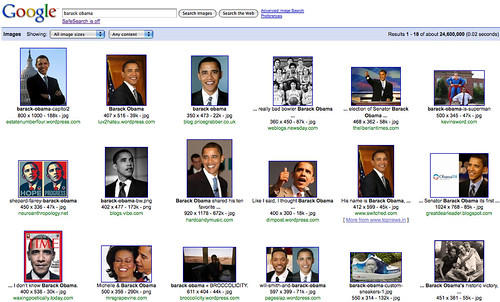
screen shot of: first page of google image search results for "Barack Obama"
I am fascinated by Fairey’s implication that the process of appropriating and re-contextualizing Google image search results might be considered a grassroots action. As an artist, I frequently use images that that I find on Google. Like Fairey suggested, my motivation for using these images is to highlight the search itself, not the derivative image.Perhaps then, these cyber Robin Hoodian actions—using and transforming Google image search results—are capable of changing the structures that control the dissemination of information. After all, the order that information appears in Google searches is determined by the amount of people searching any given topic. And as a result of the Fairey’s appropriation, his campaign poster may be forever linked to Obama’s presidency.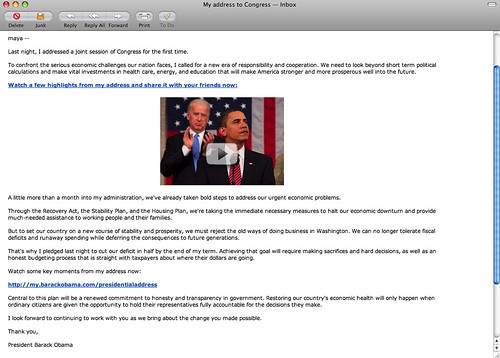
email from President Obama
Obama’s popularity can be credited to his skillfully constructed presidential campaign that effortlessly linked his name to hope. I was quick to jump onto Obama’s online campaign message of hope. Like many others, I subscribed to his twitter, facebook, and YouTube pages. I now get weekly emails from him and I even have a blog on his site…
A Response to a Response to a Response
[youtube=http://www.youtube.com/watch?v=359HwupsY1s]This is the Jack McBrayer ResponseTo the Internet ResponseTo the Republican ResponseTo the President's Address to Congress[clearspring_widget title="Late Night with Jimmy Fallon - The Jack McBrayer Response To The Internet Response To The Republican Response To The President's Address To Congress" wid="4727a250e66f9723" pid="49a664282cffce66" width="384" height="283" domain="widgets.nbc.com"]Bobby Jindal Or Kenneth From 30 Rock?
1000 Rabbis Call On Obama
[youtube=http://www.youtube.com/watch?v=KJ7Km7SEZ70] Time to Choose PeaceA Rabbinic Letter to President-Elect Barack ObamaRabbis, Cantors, and Jewish clerical students:Join your colleagues in urging President-elect Obama to make resolution of the Israeli-Palestinian conflict a top priority of the incoming administration by signing on to the statement below.Current List of SignersFrequently Asked Questions (FAQs)DONATE to support media campaign around the letterSigner DisclaimerNOT A RABBI OR CANTOR? CLICK HERE
Time to Choose PeaceA Rabbinic Letter to President-Elect Barack ObamaRabbis, Cantors, and Jewish clerical students:Join your colleagues in urging President-elect Obama to make resolution of the Israeli-Palestinian conflict a top priority of the incoming administration by signing on to the statement below.Current List of SignersFrequently Asked Questions (FAQs)DONATE to support media campaign around the letterSigner DisclaimerNOT A RABBI OR CANTOR? CLICK HERE
Text of the Letter
We the undersigned, call on you, President-elect Obama, to pledge to make resolution of the Israeli-Palestinian conflict a top priority of your Administration.While you come into office with a long list of problems before you, the long-simmering conflict between Israel and the Palestinians is among the most urgent. After eight years of half-hearted diplomacy, there is no time left to walk softly and hope for the best.The consequences of failing to establish a durable peace are grim. The influence of Iran and Hezbollah would grow among an increasingly bitter Palestinian population, and extremists would have further excuse to do vicious battle with the West. It is difficult to calculate the damage that a downward spiral into fresh waves of violence could hold.American Presidents traditionally look to the Jewish community for insight on Israel-related policy. As Jewish clergy, we pledge to mobilize our people behind your leadership for a mutually-acceptable, two-state solution. We pledge to support you through difficult, trying times, and to celebrate with you when the job is done. We pledge to let the American public know: An American President who dedicates himself to the establishment of a durable Israeli-Palestinian peace acts in the best interests of Israel and the United States.* We call on you to dedicate yourself to the establishment of a viable Palestinian state living in peace alongside Israel early in your first term.* We call on you to appoint, within your first 100 days in office, a high-level, highly-regarded envoy to the region, an individual who has the ear of both Israelis and Palestinians, the respect of the American people, and ready access to your Oval Office.* We call on you to establish mechanisms of enforcement and follow-through, so that decisions made and agreements signed will be respected and brought to fruition.
People's Hopes
There have been some wonderful submissions to togetherwehope.com. Here are some examples. Visit togetherwehope.com to share your hopes for the future.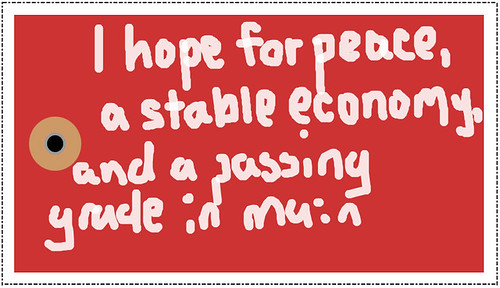
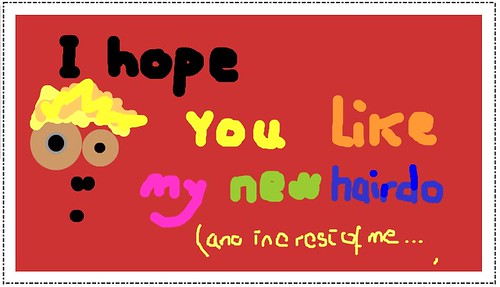
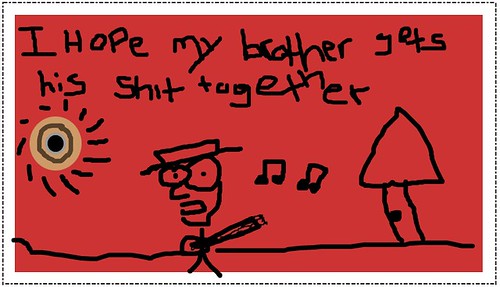
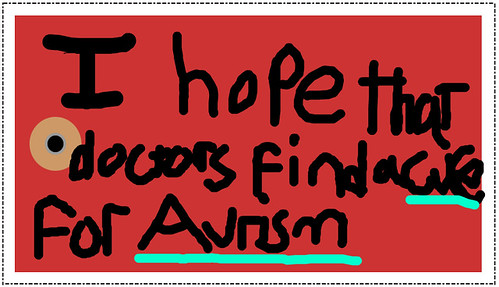
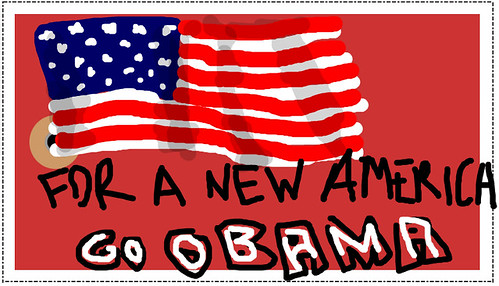
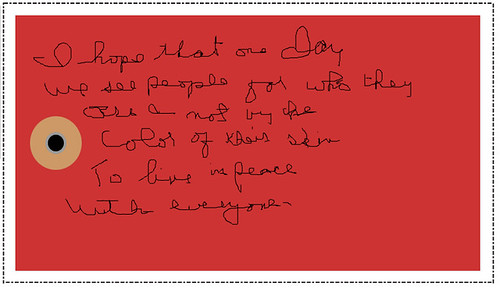
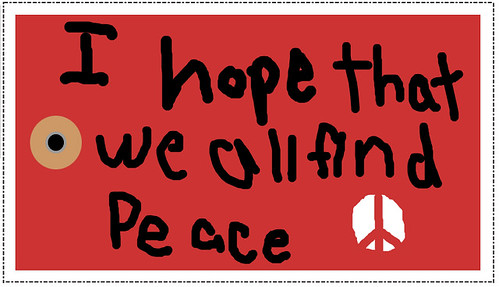

Negotiating Diaspora Identities Through New Media
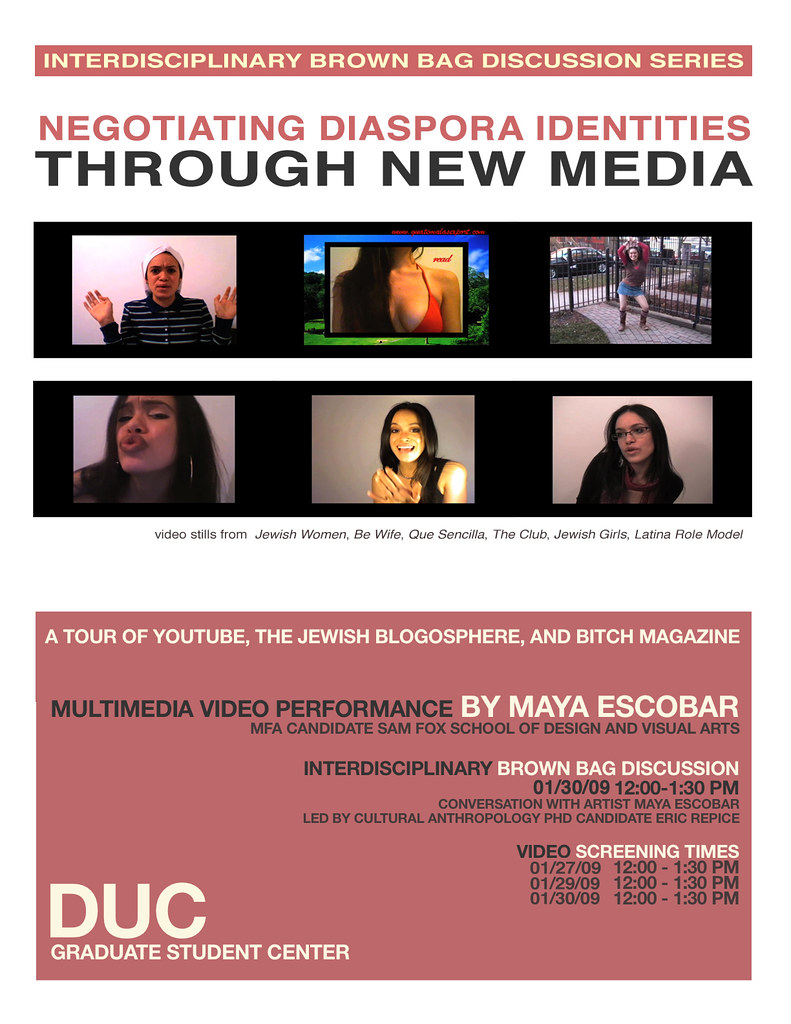 Join PhD Anthropology Candidate Eric Repice and MFA Candidate Maya Escobar in a brown bag lunch discussion concerning transnational, transcultural, and hybrid negotiations of identity through new media.How do these discussions vary between our fields?
Join PhD Anthropology Candidate Eric Repice and MFA Candidate Maya Escobar in a brown bag lunch discussion concerning transnational, transcultural, and hybrid negotiations of identity through new media.How do these discussions vary between our fields? Eric Repicefor more information on Eric Repice visit http://www.artsci.wustl.edu/~esrepice/homefor more information on Maya Escobar visit http://mayaescobar.com[youtube=http://www.youtube.com/watch?v=3li_mT--f-A][youtube=http://www.youtube.com/watch?v=G-GDmDcSH4g][youtube=http://www.youtube.com/watch?v=whLYM9o946w][youtube=http://www.youtube.com/watch?v=Vz2fhmRzCOA][youtube=http://www.youtube.com/watch?v=14bv0-dzMIc][youtube=http://www.youtube.com/watch?v=NNAxEUEE43Y]
Eric Repicefor more information on Eric Repice visit http://www.artsci.wustl.edu/~esrepice/homefor more information on Maya Escobar visit http://mayaescobar.com[youtube=http://www.youtube.com/watch?v=3li_mT--f-A][youtube=http://www.youtube.com/watch?v=G-GDmDcSH4g][youtube=http://www.youtube.com/watch?v=whLYM9o946w][youtube=http://www.youtube.com/watch?v=Vz2fhmRzCOA][youtube=http://www.youtube.com/watch?v=14bv0-dzMIc][youtube=http://www.youtube.com/watch?v=NNAxEUEE43Y]
Barack Obama - streaming from everywhere
from click for full article in artforum
The man who had just won the globe’s most visible job dominated America’s attention. President-elect Barack Obama: intelligent, witty, knowledgeable, eloquent, telegenic, photogenic, aurally pleasing. Gone, the faulty neologisms of the past eight years. Gone, the irrationality of God-directed foreign policy. Gone, the ramblings and the wacky syntax.Obama’s timely intervention into the abyss began on November 15, just eleven days after the election, when he streamed on YouTube from his website. The video opened on a modified version of the presidential seal, zooming out to reveal the words CHANGE.GOV (his website’s handle), and underneath, THE OFFICE OF THE PRESIDENT-ELECT. Then it scrolled down to the approximated presidential seal again, with these words beneath: YOUR WEEKLY ADDRESS FROM THE PRESIDENT-ELECT. NOVEMBER 15TH, 2008.This “weekly” address was in fact Obama’s very first, but enjoining “weekly” creates a faux continuity: Past activities fuse with future ones. And by issuing the podcast as the president-elect, Obama created a new, unprecedented, even extraconstitutional, national office. Still, his screen presence felt familiar, comforting. He played a role that corresponds to ones Americans have long watched on TV—from Robert Young in Father Knows Best to Sam Waterston in Law & Order (or, even more apt, Waterston in his TV ads for TD Ameritrade). The role requires unflappability, which Obama exudes like Verbena cologne, and it is his aim, in this video, to quiet America’s erratic pulse, its arrhythmic financial markets, its frightened workers, its bankrupt home owners.The president-elect is seated behind a desk on a black leather chair, his head cushioned against its back. He’s in medium shot and part of a cozy composition; nothing seems out of place. He almost appears tucked into the image, which divides into discrete elements. On the left, an American flag hangs the length of the frame, the one and only element taller than he. The background is a medium-brown wood-paneled wall. To the left of Obama, shoulder-high, three dark-blue volumes: Public Papers of the Presidents: John F. Kennedy (1961–1963). The tomes lend a somberness to the image, representing the popular, fallen president, while associating JFK’s New Frontier with Obama’s upcoming variation on the New Deal. On the far right, also shoulder height, another volume, its title blurred, and a basketball, like a Pop art sculpture, signed by Lenny Wilkens of the US Olympic basketball team. A plant’s green leaves drape over the ball.Though it’s video, it’s basically a still image. Obama wears a dark red tie and a flag pin on his gray lapel. His head moves up and down gently, for emphasis, and occasionally it subtly shifts from side to side. His expression is serious, sober, nearly unchanging, and the new gray at his temples does no harm. The sonorous Obama voice stays steady, on course, with none of the rise and fall heard in his campaign speeches, but he doesn’t shy away from unsettling language, like “the greatest economic challenge of our times.” Still, he’s not running anymore, so he’s transmuted his stump speech into a Fireside Chat, in which the screen is the hearth and his voice the melody in the air. “I know that we can steer ourselves out of this crisis. . . . I am more hopeful than ever that America will rise once again.” He has checked his radiant smile, since these are not happy times, but he reassures the American public that happy days are here to come.From this initial video message to his preinauguration press conferences to more recent YouTube clips and weekly talks, Obama has transformed the function of the president-elect, just as he transfigured the presidential campaign into an Internet phenomenon. Streaming from the Office of the President-Elect, a nonplace or anyplace, Obama proclaims his virtual presidency. The easy acceptance by the public and the media of this novel authority—after some initial “Where’s the president?” “Nowhere”—attests to the way people live today, in online encounters and communities. They connect as if they were face-to-face.Barack Obama keeps making history. He has now also affected the English language, specifically the word virtual. Through his prestidigitations, he has helped along a linguistic shift: Virtual is the new actual. And, in that sense, Obama is president, news maker, and commentator. He can explain himself, by himself. Since he knows what he’s thinking—and why—before the mediacs do, he scoops them effortlessly. In comparison with his skills, their responses seem increasingly thin, redundant, more obviously ill-informed, and excruciatingly superficial. Obama’s capacity to think and answer might force the “cult of personality” pundits to stop shouting and start reading. Actually, virtually.Lynne Tillman is a novelist.
Georgia Kotretsos
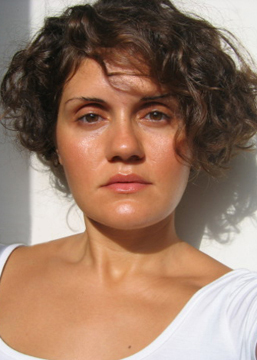 Athens based artist, Georgia Kotretsos is the editor-in-chief of Boot Print, a contemporary art publication published by Boots Gallery. For the next two weeks Georgia will be the guest blogger on Art 21.check her out....
Athens based artist, Georgia Kotretsos is the editor-in-chief of Boot Print, a contemporary art publication published by Boots Gallery. For the next two weeks Georgia will be the guest blogger on Art 21.check her out....
excerpt from her first post
[I] condemn all forms of violence and vandalism and I have been firm on this since the very beginning. Yet in a cloud of ambiguity the media, a political party and many civilians justified the mayhem and fed its appetite. A state of simmering pandemonium stamped this holiday season and with no further delay, a bloody dialogue was set in motion in the early hours of January 5th, 2009. Thirty Kalashnikov shots were fired towards three policemen who were guarding the Ministry of Culture. The gunmen sealed the attack with a grenade. A 21 year-old policeman was wounded and still remains in critical condition.
Both shootings took place in Exarchia, in downtown Athens. When asked about January 5th, a middle-age female resident of the area said with confidence to a news reporter “I heard Kalashnikov shots been fired.” Who can distinguish the type of a gun by its shots in the middle of the night in Athens? The death of the student has sparked the worst riots for decades, which escalated to be a sociopolitical vendetta. Is this a society of an eye for an eye?
Why is this all happening? For way too many reasons that go too far back, but most importantly because the Greek gluttonous government in power since 2004 is digging a hole and inviting us all to jump in. For the last 18 months, new scandals make weekly headlines, there isn’t even enough time to react in between – the lethal combination of a corrupted government and a lethargic Prime Minister, Kostas Karamanlis, is what we’re left with at a time of severe economic stagnation, a chronic lack of meritocracy, an endless list of social injustices and continuous brutality towards protestors, which in this case were often teenagers, by the state.
How could I ever link this intro to the art postings I’ll upload from Athens for you in the following days? Maybe I can’t and maybe I shouldn’t and for that I have to say this now.
Art may echo this page of Greek contemporary history, but I’m not convinced it’s entirely necessary unless we’re willing to individually evaluate the role of art within the contemporary Greek society and further admit openly the kind of voice it has for each one of us, and then get on with our day. There is life after art and if artists are willing to react, or make a stand, they are not obliged to call it art – an artist is also a citizen. If anybody finds comfort in turning this into some careerist driven niche, I’ll personally stay away. An open dialogue that’s not addressed exclusively to the intellectual elite can be an initial answer to our racing thoughts[...]
Washington University in St. Louis MFA Open Studios
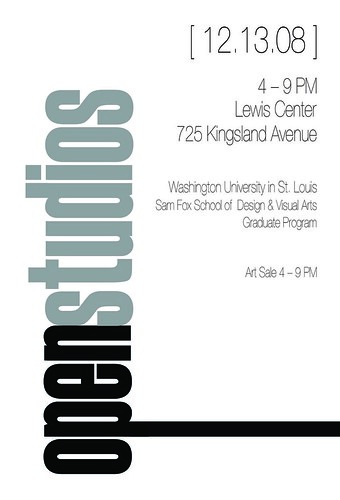 Washington University Graduate Open Studios and Art Sale Saturday, December 13th, 2008 Open Studios: 4-9 p.m. Lewis Center725 Kingsland_____________________________________________________________________Washington University MFA students are pleased to announce our Fall 2008 Open Studios and Art Sale, featuring work by more than 40 innovative young artists working in painting, printmaking, photography, sculpture, combined media, installation and video.From 4-9 our studios will be open to the public and artists will be present to answer questions and interact with visitors. This event presents a unique opportunity to experience the work of emerging artists outside the traditional gallery setting. The event will be accompanied by an art sale from 4-9:00 pm.The art sale will take place on the third floor of the MFA Building and will feature original works by MFA students. Payments may be made in cash, or by check with ID only. Proceeds will benefit the Washington MFA Student Organization and will be put towards the growth and development of the MFA program as well as to the individual artist.The Graduate Program has been flourishing at Washington University. Housed in the distinctive Lewis Center in the heart of University City, MFA students and faculty interact in a collaborative, organic setting, creating a program that is always evolving and pushing the boundaries of contemporary artistic practice. Please join us for this unique event.
Washington University Graduate Open Studios and Art Sale Saturday, December 13th, 2008 Open Studios: 4-9 p.m. Lewis Center725 Kingsland_____________________________________________________________________Washington University MFA students are pleased to announce our Fall 2008 Open Studios and Art Sale, featuring work by more than 40 innovative young artists working in painting, printmaking, photography, sculpture, combined media, installation and video.From 4-9 our studios will be open to the public and artists will be present to answer questions and interact with visitors. This event presents a unique opportunity to experience the work of emerging artists outside the traditional gallery setting. The event will be accompanied by an art sale from 4-9:00 pm.The art sale will take place on the third floor of the MFA Building and will feature original works by MFA students. Payments may be made in cash, or by check with ID only. Proceeds will benefit the Washington MFA Student Organization and will be put towards the growth and development of the MFA program as well as to the individual artist.The Graduate Program has been flourishing at Washington University. Housed in the distinctive Lewis Center in the heart of University City, MFA students and faculty interact in a collaborative, organic setting, creating a program that is always evolving and pushing the boundaries of contemporary artistic practice. Please join us for this unique event.
Help Republic Windows Workers!
Fredrico Martinez, who joined other workers in a prayer vigil, said he had worked at the factory for nine years.
Republic Windows, a Chicago company since 1965, closed it's doors on Friday, December 5, leaving 300 workers without a job, and only a 3 day notice. Under the WARN Act this is illegal, and the company must give at least 60 days notice. Workers have occupied the plant and are demanding that if the plant stays closed, they receive the wages, severance, vacation pay due them--totally $1 million.
Here are some things you can do to help:
1. Donate to the strike fund the families of the workers have to eat, pay rent and utilities, while they are occupying the plant. Donations should be sent to UE Local 1110 at 37 S. Ashland Chicago, IL 60607.
2. Bring friends to the plant to show solidarity, workers can get very de-moralized if they feel like people are just going on with their lives while they are putting themselves at such risk, so any small group of people can be very helpful to the morale. We invite you to sign our solidarity posters and visit with workers.
3. Call Bank of America CEO Kenneth Lewis. Say that you are a concerned member of the community who is disturbed by BoA's apparent disregard for people's livelihoods by forcing republic windows to shut down without paying people their vacation and WARN act pay. BoA just got $25 Billion from taxpayers precisely to make credit lines like the Republic Windows line work. Calls help, but so do emails and faxes to the CEO. Jobs with Justice National web site has an action email you can send to BofA.
Talks Fail to End Sit-In at Closed Factory
CHICAGO — As workers at a window-making plant here prepared to spend a fourth night in the factory they had been told to leave for good, union leaders, bankers and company owners met into the night on Monday but the meetings ended without bringing about an end to the workers’ peaceful but increasingly tense occupation of the plant.
The layoff of 250 workers last week at Republic Windows and Doors on the North Side with only three days’ warning and without pay the workers say is owed to them had, by Monday, drawn the attention of nearly every politician with a connection to this city, numerous union and workers’ rights groups and scores of ordinary people, who arrived at the plant offering families toys, food and money.
Gov. Rod R. Blagojevich, who met with the workers Monday morning, said the State of Illinois was suspending its business with the Bank of America, Republic Windows’ lenders, and that the Illinois Department of Labor was poised to file a complaint over the plant closing if need be. Political leaders on the Chicago City Council and in Cook County threatened similar actions. Representative Luis V. Gutierrez said he was encouraging the Department of Labor and the Department of Justice to investigate. “Families are already struggling to keep afloat,” Mr. Blagojevich said.
Workers here say they blame the operators of Republic Windows and Doors, a manufacturing company that was founded in 1965, for giving them just three days’ notice before closing last Friday, with no earlier hints to the employees that orders for vinyl windows and sliding doors had fallen off.
Late Monday, the company released a statement that indicated that it had known since at least mid-October that it intended to close the factory by January. The statement suggested that it had gone back and forth with Bank of America for more than a month, but that the bank had rejected several of its “wind down” plans as well as the company’s request for financing to pay workers’ owed vacation.
The statement also revealed that the family of Richard Gillman, once a minority shareholder who in 2006 and 2007 bought out Republic, last month formed a new window business — Echo Windows LLC. All along, workers here said they feared the owners were shutting down to reopen a cheaper operation somewhere else. A trade publication reported last week that Echo had recently bought a window manufacturing plant in Red Oak, Iowa. No one from Republic could be reached for comment.
“It is looking like reopening is exactly what happened,” said Tara Taffera, the editor and publisher of the publication, Door and Window Manufacturing magazine.
The company’s statement said it had been placed, “in the impossible position of not having the ability to further reduce fixed costs, coupled with severe constrictions in the capital debt markets and an unwillingness of the current debt holder to continue funding the operations.”
The workers here also blamed Bank of America for preventing the owners from paying its workers for already-earned vacation time and severance. Workers here said the owners told them last week that Bank of America had cut off the company’s credit line and would not allow payments.
As part of government bailout efforts for the struggling banking industry, Bank of America has received $15 billion, and is expected to receive an additional $10 billion. That fact left many workers here seething.
“Taxpayers would like to see that bailout money go toward saving jobs, not saving C.E.O.’s,” said Leah Fried, an organizer for the United Electrical, Radio and Machine Workers of America. “This is outrageous.” [...]
[youtube=http://www.youtube.com/watch?v=Kf4fntSeK3E]
Hope in the STL POST
'Hope' springs anew for Washington University grad students
 November 19, 2008 -- Carianne Noga, a graduate student of art at Washington University, ties tags of hope onto a sculpture outside the University City Post-Office. Noga and fellow student Maya Escobar started soliciting people's hopes to place on the sculpture. (Christian Gooden/P-D)By Margaret GillermanST. LOUIS POST-DISPATCH11/29/2008UNIVERSITY CITY — Georgia O'Keeffe found inspiration in the light and shapes of New Mexico. Mary Cassatt found hers in mothers and children. Maya Escobar and Carianne Noga, two graduate students at Washington University's Sam Fox School of Art and Design, found inspiration for their latest project from the long lines on Election Day at a Ben and Jerry's ice cream shop in the Loop.There, on the sidewalk outside the shop, which was giving away scoops of ice cream to voters, the two women felt excitement and hope among voters. They said they found that same feeling across the street in the long line of voters waiting to vote at the Loop polling place."We wanted to continue that moment and not let it peak out," Noga said.Before the polls closed, they had begun to create their "I hope…" project.They first staked out a site: outside the University City Post Office at 561 Kingsland Avenue.They then provided people with bright red tags and paint markers for them to write down their hopes for a better future.The tags then are affixed to a permanent lattice wood sculpture already on site outside the Post Office."As difficult as it can be sometimes to voice our wishes and dreams, it can be strengthening," the artists say in explaining their mission. "We can be reminded of the rest of the world outside our own immediate concerns. In this period of great change and near infinite possibilities, it is time for us to voice our hopes."While the project is for all people, Escobar said it holds special meaning for young people."This is our moment to make a difference for our communities," Escobar said. "We need to be aware — of our national situation, of the economy."Many of the hopes expressed — most recorded anonymously — so far are noble and universal: "I hope for world peace" and "My hope is that hate is no longer."Some of the hopes are personal. "I hope to not fear death," wrote one.Others have a distinctly political bent: "I hope we get out of Iraq and don't go to war with Iran." And some are just fun, like the person hoping for "chocolate cake for dessert ..."A University City police officer named Hope — Reginald Hope — shared with them his own hope: for safety for police officers. A fellow officer was killed while on duty near the Loop last month.Washington University Chancellor Mark Wrighton gave his hope and "wishes for better health and greater prosperity for all."The artists also are encouraging people to submit their hopes online at togetherwehope.com.The existing sculpture outside the post office was designed in 2005 by an undergraduate architectural design studio taught by Carl Safe in the Washington University School of Architecture. University City resident Ethel Sherman had asked Safe to help create a sculpture in memory of her husband William Sherman, a Washington University biochemist who died about five years ago."It's strong like Bill and peaceful and quiet," she said. Sherman said she's thrilled about adding "I hope..." to it."This is an exciting time of change and hope," said Sherman, a retired psychologist and teacher who worked for 10 years at the Loop's Craft Alliance.The artists, both 24, come from family traditions of public service and political idealism."I grew up under the table of political meetings," says Escobar, remembering her childhood in Chicago. "My friends and I formed our first political organization when we were 11 — Students Against Child Oppression — on behalf of children in sweatshops in Mexico."Her mother is a school nurse, and her father, an educator, hosts a radio show in Chicago called "Si, Se Puede," which means "Yes, We Can." The program has been around since 1996.Noga grew up in the Washington, D.C., area and in Georgia. Her father is a psychiatrist at a state hospital, and her mother is a library director.Both artists are second-year graduate students in the two-year master's of fine arts program.The project will remain up through January. Later, the tags can be relocated to other sites and the online site will remain.University City has embraced the "I hope ..." project, according to city manager Julie Feier."It's an inspiring project," she said.
November 19, 2008 -- Carianne Noga, a graduate student of art at Washington University, ties tags of hope onto a sculpture outside the University City Post-Office. Noga and fellow student Maya Escobar started soliciting people's hopes to place on the sculpture. (Christian Gooden/P-D)By Margaret GillermanST. LOUIS POST-DISPATCH11/29/2008UNIVERSITY CITY — Georgia O'Keeffe found inspiration in the light and shapes of New Mexico. Mary Cassatt found hers in mothers and children. Maya Escobar and Carianne Noga, two graduate students at Washington University's Sam Fox School of Art and Design, found inspiration for their latest project from the long lines on Election Day at a Ben and Jerry's ice cream shop in the Loop.There, on the sidewalk outside the shop, which was giving away scoops of ice cream to voters, the two women felt excitement and hope among voters. They said they found that same feeling across the street in the long line of voters waiting to vote at the Loop polling place."We wanted to continue that moment and not let it peak out," Noga said.Before the polls closed, they had begun to create their "I hope…" project.They first staked out a site: outside the University City Post Office at 561 Kingsland Avenue.They then provided people with bright red tags and paint markers for them to write down their hopes for a better future.The tags then are affixed to a permanent lattice wood sculpture already on site outside the Post Office."As difficult as it can be sometimes to voice our wishes and dreams, it can be strengthening," the artists say in explaining their mission. "We can be reminded of the rest of the world outside our own immediate concerns. In this period of great change and near infinite possibilities, it is time for us to voice our hopes."While the project is for all people, Escobar said it holds special meaning for young people."This is our moment to make a difference for our communities," Escobar said. "We need to be aware — of our national situation, of the economy."Many of the hopes expressed — most recorded anonymously — so far are noble and universal: "I hope for world peace" and "My hope is that hate is no longer."Some of the hopes are personal. "I hope to not fear death," wrote one.Others have a distinctly political bent: "I hope we get out of Iraq and don't go to war with Iran." And some are just fun, like the person hoping for "chocolate cake for dessert ..."A University City police officer named Hope — Reginald Hope — shared with them his own hope: for safety for police officers. A fellow officer was killed while on duty near the Loop last month.Washington University Chancellor Mark Wrighton gave his hope and "wishes for better health and greater prosperity for all."The artists also are encouraging people to submit their hopes online at togetherwehope.com.The existing sculpture outside the post office was designed in 2005 by an undergraduate architectural design studio taught by Carl Safe in the Washington University School of Architecture. University City resident Ethel Sherman had asked Safe to help create a sculpture in memory of her husband William Sherman, a Washington University biochemist who died about five years ago."It's strong like Bill and peaceful and quiet," she said. Sherman said she's thrilled about adding "I hope..." to it."This is an exciting time of change and hope," said Sherman, a retired psychologist and teacher who worked for 10 years at the Loop's Craft Alliance.The artists, both 24, come from family traditions of public service and political idealism."I grew up under the table of political meetings," says Escobar, remembering her childhood in Chicago. "My friends and I formed our first political organization when we were 11 — Students Against Child Oppression — on behalf of children in sweatshops in Mexico."Her mother is a school nurse, and her father, an educator, hosts a radio show in Chicago called "Si, Se Puede," which means "Yes, We Can." The program has been around since 1996.Noga grew up in the Washington, D.C., area and in Georgia. Her father is a psychiatrist at a state hospital, and her mother is a library director.Both artists are second-year graduate students in the two-year master's of fine arts program.The project will remain up through January. Later, the tags can be relocated to other sites and the online site will remain.University City has embraced the "I hope ..." project, according to city manager Julie Feier."It's an inspiring project," she said.
[email protected] | 314-725-6758
together we hope
[youtube=http://www.youtube.com/watch?v=ZcwPoFPdeVM]The polling lines were LONG in STL, I waited over 4 hrs to vote! But it was well worth it, I have never been more proud to be an american and to take part in such an important moment in history.The night of the elections, Carianne and I initiated our project together we hope with the help of our friend Becky Potts. We passed out red tyvek tags and asked people to write down their hopes for the future. We tried to encourage them to go beyond "I hope Obama wins" or I hope McCain wins".People wrote things ranging from "I hope I get good grades" to "I hope that we end the war in Iraq and do not go to war win Iran."Check out this website we created where you can submit your hopes online. We will make a tag for each hope submitted...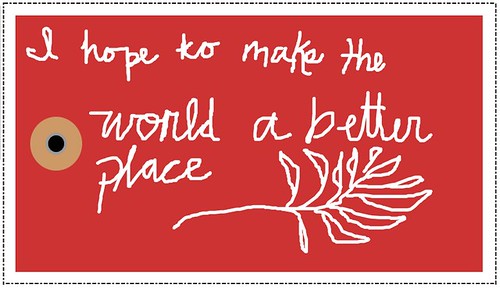
Sarah Silverman for Obama
[youtube=http://uk.youtube.com/watch?v=AgHHX9R4Qtk]
Barack in Berlin: Obama Speech July 24, 2008
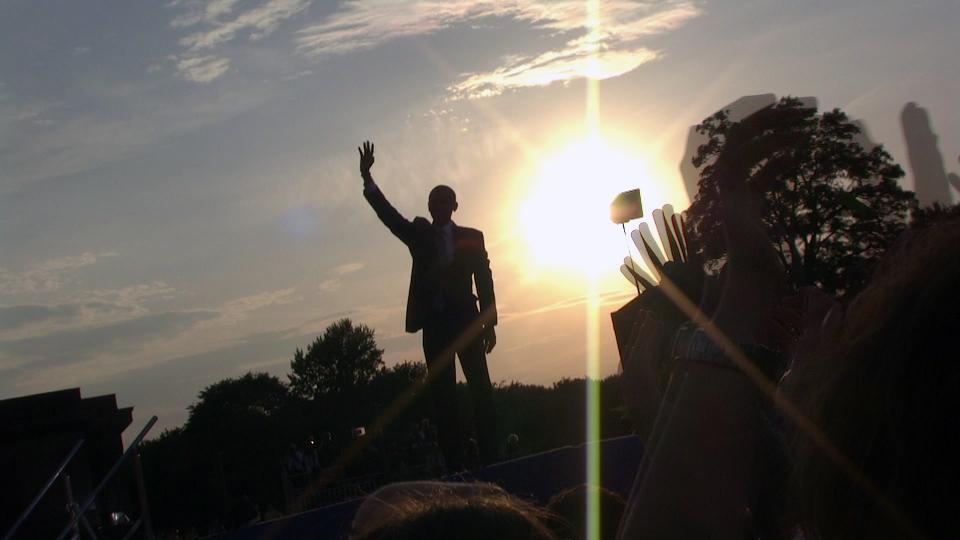
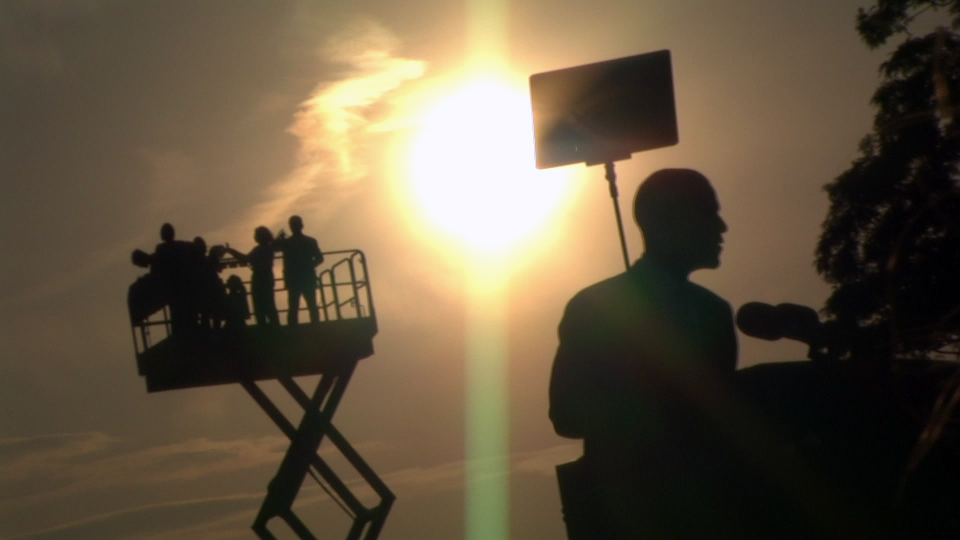 [youtube=http://uk.youtube.com/watch?v=wn0c-fiFNOc][youtube=http://uk.youtube.com/watch?v=V_Y8m2s3nnI][youtube=http://uk.youtube.com/watch?v=pHFYPad-cx8]
[youtube=http://uk.youtube.com/watch?v=wn0c-fiFNOc][youtube=http://uk.youtube.com/watch?v=V_Y8m2s3nnI][youtube=http://uk.youtube.com/watch?v=pHFYPad-cx8]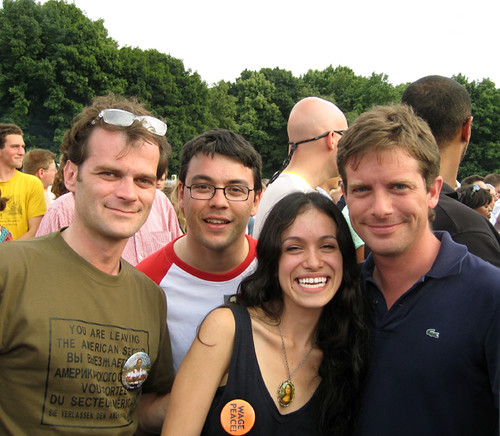 Marcello Saponaro, Andrea Mollica, Maya Escobar, Giuseppe CivatiPeople came from all over the world to see Obama!!! Here I am with 3 Italian friends I made who came to Berlin just for the rally. (giuseppe was my camera relief when my arms could no longer bear the weight...)
Marcello Saponaro, Andrea Mollica, Maya Escobar, Giuseppe CivatiPeople came from all over the world to see Obama!!! Here I am with 3 Italian friends I made who came to Berlin just for the rally. (giuseppe was my camera relief when my arms could no longer bear the weight...)
